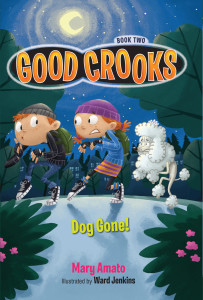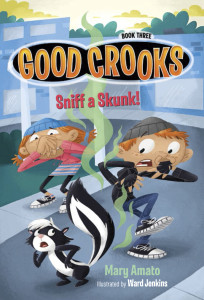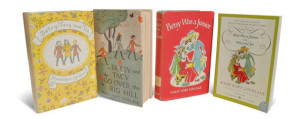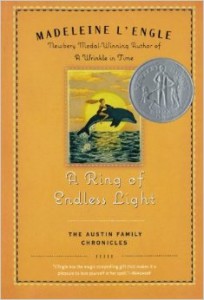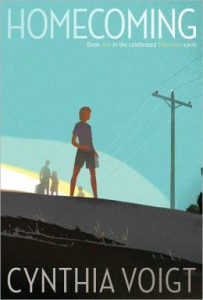DKH: How long was it before you sold your first story?
WS: It was six years before I sold my first story (to Cricket Magazine) and seven years before my first picture book sold (after dozens of rejections on many stories). The more I learned, the more I realized what I still needed to learn. In fact, I still often think about how much more there is to learn. I kept going because I love picture books so much, and just can’t imagine not writing (even if it’s just for me and my kids).
DKH: Wendi, can you tell us a bit about your recent projects and how you stay active as a writer?
WS: I have 6 picture books published and a new one coming out this August. The most recent are TURKEY TROUBLE, TURKEY CLAUS and the upcoming TURKEY TRICK OR TREAT (all from Two Lions Press). I have won the Children’s Choice Award for two of my books (TURKEY TROUBLE and JUST ONE MORE) and TURKEY CLAUS was named one of the “10 Best Picture Books of 2012” by YABC.
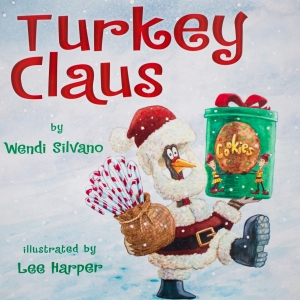
DKH: What else have you written and published?
WS: I have written more than a dozen emergent readers (including 7 Duck and Goose tales), numerous stories, poems and articles in children’s magazines such as Highlights for Children, Highlights High Five, Highlights Hello, Cricket, Babybug, OWL, The Friend, Pockets and others. I have also written more than a dozen teacher resource books, hundreds of educational reading passages and numerous other work-for-hire projects.
DKH:In thinking about our upcoming CRAFTING COMPELLING CHARACTERS workshop in April, how do you find and develop your characters?
WS: I find characters EVERYWHERE! I have several spiral index card pads full of character ideas. Sometimes I will see a person or animal that gives me an idea. (My Duck and Goose emergent readers were inspired by the geese I saw at Corn Lake, my “hopefully-soon-to-be-sold” manuscript THE TALE OF A TAIL was inspired by our pet cat who is afraid of his own tail, and so on). Sometimes just a name will come to me and it becomes a character that starts inhabiting my mind. (One example is an ordinary lad with an extraordinary name- Bartholomew Augustus Montgomery III). Other times I might come up with a book title that I like and then imagine who the characters in that book might be (for example “Two Proper Penguins”). Most of these characters sit in my notebooks for a LONG time before they ever get their stories written. It takes me months or years even to figure out exactly what their personalities are like, what they care about, what they desperately want and how they might go about trying to get it. Some may never get that far, but there’s always one or two that I just keep thinking about. Those are the ones I “grab” and run with.
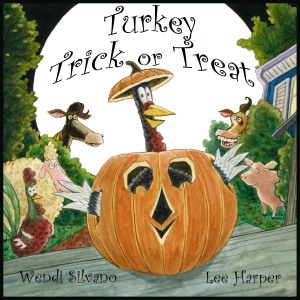
DKH: Yes, like Turkey! Wendi, your lengthy career and process make it look easy. Is there an aspect in your writing that you find difficult?
WS:For me, the hardest part of writing is getting the right idea. Like I said earlier, I have gazillions of ideas for characters or very basic concepts, but I struggle to figure out what their stories are in detail. Once I have a fairly fleshed out idea of what the story will be, the first draft comes fairly quickly. After that, revision can take forever, but it’s not anywhere near as hard for me as getting the “perfect” story idea.
DKH: Do you have advice for someone starting their journey in writing children’s literature?
WS: Determine from the beginning that you are going to stay in it for the long haul and that no matter how long it takes you will keep learning and keep trying. One of the biggest parts of the process is patience and persistence. Realize that you not only have to write an amazing story but you have to find just the right editor or agent in just the right moment in time. That is like waiting for lightning to strike (but it does strike!).
Also, I suggest not sending out your first stories to publishers. Write them, revise them, have them critiqued. Then file them away. Read craft books, go to workshops, take online classes and read HUNDREDS (or thousands) of books in your genre. Then go back and pull out those early stories and you will see why it’s better to have waited. None of that writing was wasted. It helped you grow as a writer, but it probably wasn’t good enough for publication.
Oh… and did I mention the most important thing… READ – HUNDREDS AND HUNDREDS of books!
DKH: Great advice Wendi! I have one last question, if you could spend one day with an author or author-illustrator who would that be?
WS: Ooooh… hard question! There are SO many children’s authors that I absolutely love (Cynthia Rylant, Don and Audrey Wood, Karma Wilson, Margie Palitini, Molly Bang, Barbara Park, Roald Dahl and on, and on, and on). But, if I had to choose just one, it would probably be the late Shel Silverstein (and not just because his last name is so close alphabetically to mine that we are filed next to each other on the shelves), but because I remember laughing so hard at his poetry, and being so “charmed” by the uniqueness and exactness of his picture books. I consider him a “literary magician”!
WENDI SILVANO has always loved children’s literature, and is now  delighted to take part in creating books like those she loved as a child. She has been writing for children for more than 20 years and is the award-winning author of seven picture books, more than a dozen emergent readers, numerous magazine stories and teacher resource books as well as educational materials. Her picture books Turkey Trouble and Just One More both won the IRA’s Children’s Choice Award, while Turkey Claus was named one of the “Ten Best Picture Books of 2012” by YABC. She currently writes from her home in Grand Junction, Colorado. Her latest picture book, Turkey Trick or Treat will be released in 2015 from Two Lions Press.
delighted to take part in creating books like those she loved as a child. She has been writing for children for more than 20 years and is the award-winning author of seven picture books, more than a dozen emergent readers, numerous magazine stories and teacher resource books as well as educational materials. Her picture books Turkey Trouble and Just One More both won the IRA’s Children’s Choice Award, while Turkey Claus was named one of the “Ten Best Picture Books of 2012” by YABC. She currently writes from her home in Grand Junction, Colorado. Her latest picture book, Turkey Trick or Treat will be released in 2015 from Two Lions Press.
Website: www.wendisilvano.com
Facebook: www.facebook.com/wendisilvanochildrensauthor
Twitter: @WendiSilvano
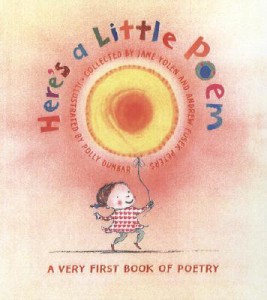








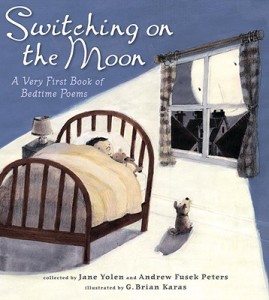
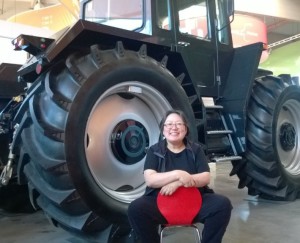
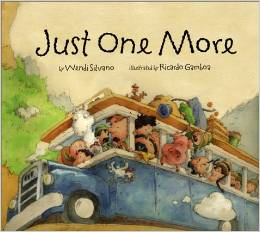


 delighted to take part in creating books like those she loved as a child. She has been writing for children for more than 20 years and is the award-winning author of seven picture books, more than a dozen emergent readers, numerous magazine stories and teacher resource books as well as educational materials. Her picture books
delighted to take part in creating books like those she loved as a child. She has been writing for children for more than 20 years and is the award-winning author of seven picture books, more than a dozen emergent readers, numerous magazine stories and teacher resource books as well as educational materials. Her picture books 